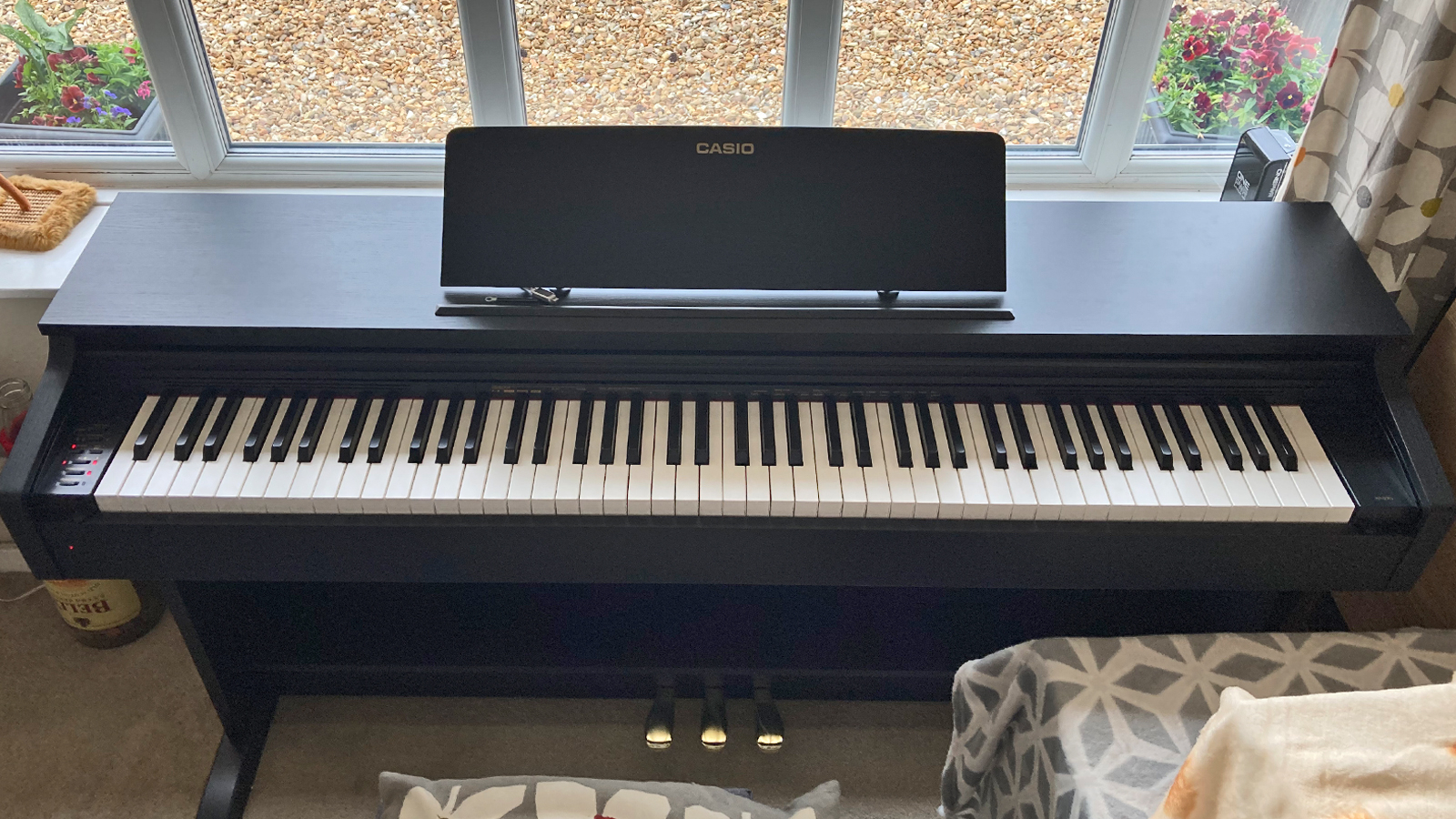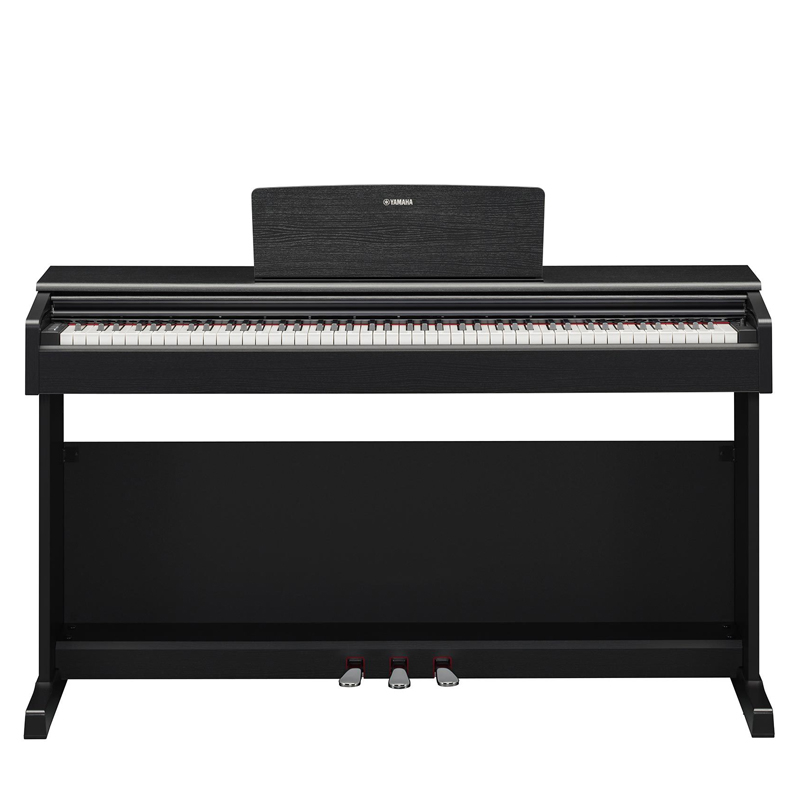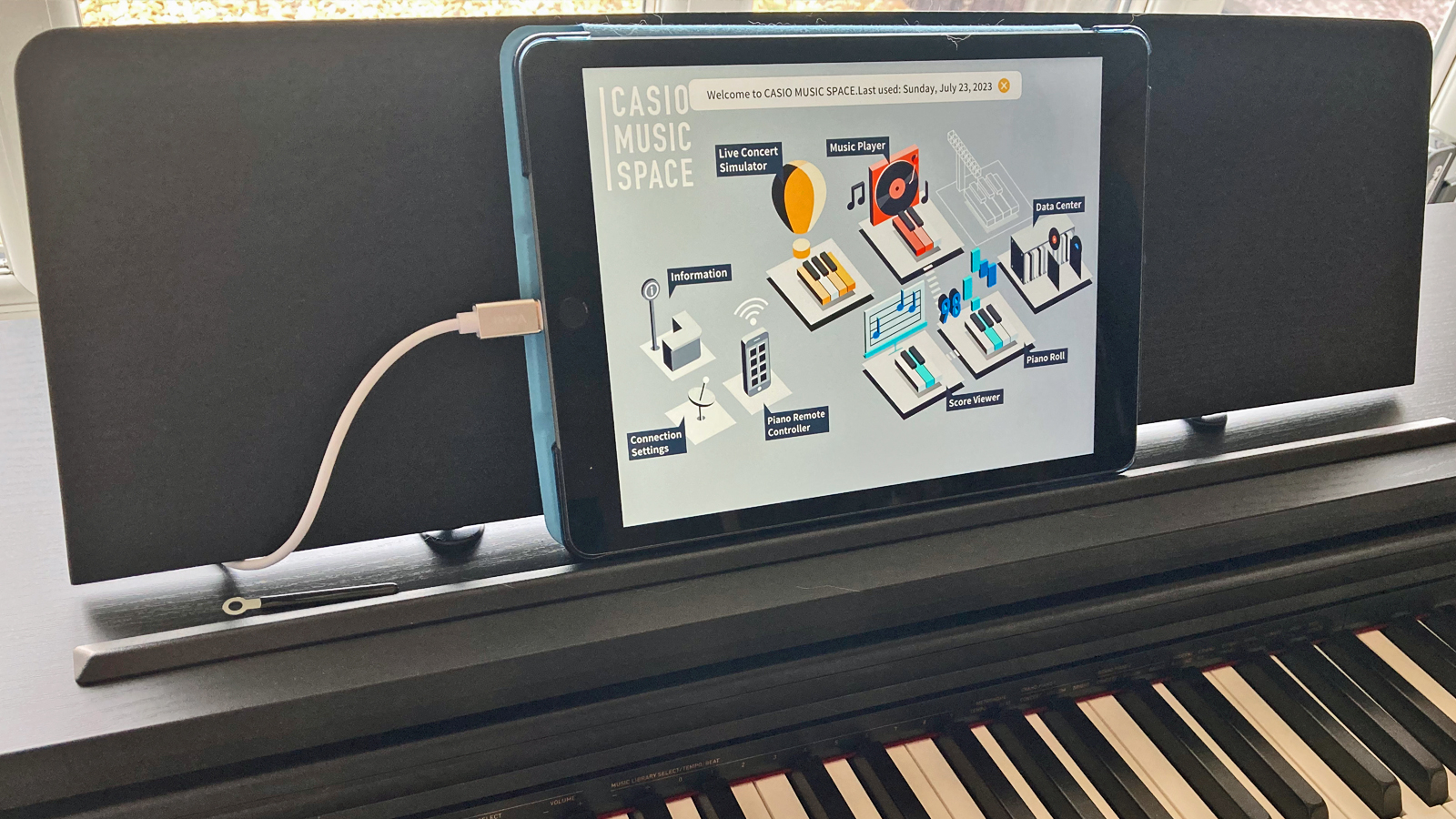MusicRadar Verdict
Casio's 'Piano First' philosophy is based on the principle that the kind of entry-level models aimed at piano students and teachers should benefit from the same core technology as that used in more advanced instruments. The AP-270 is a fine example of the resulting balance between excellent quality and affordability.
Pros
- +
Smart, compact design
- +
Great for beginners
- +
Good value
Cons
- -
The keyboard is a little thuddy
- -
A bit lacking in features
MusicRadar's got your back
Casio Celviano AP-270 review: What is it?
While Casio might be one of the names on everyone’s lips when it comes to affordable electronic keyboards for kids, or possibly even beginner-friendly stage pianos, they’re not so well known for their domestic console-style digital pianos - the sort of thing that combines the look and feel of a traditional acoustic piano with the convenience and maintenance-free appeal of a digital instrument.
The Celviano AP-270 does exactly that, pairing Casio’s tried and tested Tri-Sensor Scale Hammer Action II keybed with their AiR Grand piano sound engine in a smart wooden chassis that’s designed to occupy a permanent space in your home. Priced to appeal to the ‘my first piano’ market, the AP-270 is the gateway model in the AP range, which goes on to include pricier, more fully-featured models such as the AP-470 and AP-710.
Available either in black, brown or white finishes, our review unit was the AP-270BK, which means the casing was a smart, matt black woodgrain finish. The Casio logo is depicted in subtle gold lettering on a detachable music rest above a sliding key cover that retracts smoothly back into the casing when you’re ready to play. The damper, sostenuto and sustain pedals are all present and correct, finished in gold, with support for half pedalling, making this an ideal instrument for learning all the way up to grade 8.
Stereo 8W speakers fire downwards from the underside of the keyboard unit, but there are slim vents either end of the instrument facing the player just above the keyboard that also fire sound at you as you’re playing for a more realistic experience.
Connectivity-wise, there are two 6.3mm headphone outputs - useful in a teaching scenario - a USB port for connecting to computers, tablets and smartphones and, besides the connector for the bespoke pedal unit, that’s about it. These connectors are mounted on the underside of the keyboard unit, so you either have to feel around for them or wriggle underneath the piano like a car mechanic to find them - fine if you’re a 10-year-old but not so great if you’re at the age where your body is starting to groan and creak in protest at anything other than getting off the sofa to put the kettle on.
There are no line outs, USB audio interface or auxiliary inputs for plugging in your phone to play along with, and no Bluetooth support either, so connectivity is one area in which the AP-270 starts to reveal its entry-levelness.
Casio Celviano AP-270 review: Performance & Verdict

Like a wardrobe or bookcase from a certain famous Swedish furniture company, the AP-270 comes flat-packed in a large box and requires some self-assembly. The box weighs 47 kg, so unless you’re part of the niche subset of pianists who are also bodybuilders, you’ll probably need two people to unpack and assemble the piano. Assembly itself isn’t difficult, requiring just a few screws to assemble the stand, backboard and integrated pedal unit and then bolt the main keyboard unit on top. Connect the pedal cable and the power supply and you’re left with a smart and substantial modern-looking instrument that will complement any living room.
Want all the hottest music and gear news, reviews, deals, features and more, direct to your inbox? Sign up here.
The AP-270 employs Casio’s Tri-Sensor Scaled Hammer II keyboard action, as found across many more expensive models in both the Privia and Celviano ranges. While it’s not our favourite action - I found it a little bit plasticky and thunky, and while playing at low volume or with headphones, you can hear and feel the thump of the keys - the weighting is nicely balanced.
Trills and repeated notes are easy to pull off thanks to the three sensors fitted to each key, and the top surface of both black and white keys is lightly textured with a comfortable sort of faux-ivory, wood grain effect. Since this keybed is used in so many other of their instruments, you’d have to spend quite a bit more money to get a better action in a Casio, making this entry-level model very good value indeed.
The time from switch-on to ready-to-play takes around five seconds, about average for a digital piano of this type. Whilst powered up, a small red LED on the front left of the casing illuminates so that you can tell if you’ve left it powered on with the lid closed - the auto power-off time defaults to four hours, so this is quite a useful little indicator.
Button up


Yamaha Arius YDP-145: Great small home piano from Yamaha that combines the sound of their 9’ CFX concert grand with their excellent GHS keyboard.
Kawai KDP-120: Featuring the acclaimed RH compact II hammer action keybed and the voice of the Shigeru Kawai SK-EX concert grand, the KDP120 makes a great choice for beginners.
Roland RP107: With its SuperNATURAL sound engine and PHA-4 key action, the RP107 combines excellent playability and a natural tone at a price that doesn't break the bank.
A small panel to the left of the keyboard hosts the power switch, a rotary volume control and seven LED-illuminated buttons that are used for grand piano voice selection, reverb on/off and MIDI recording. The uppermost button is the Function switch, which when held down allows the piano keys to be used to activate various internal functions, including non-piano voice selection, Concert Play playback, music library song selection and metronome tempo.
These functions are screen printed in gold text above the designated keys in a subtle enough manner not to detract from the traditional leanings of the design. I’m not particularly a fan of this method of changing settings, as you have to look left to find the Function button, then swivel to the right to check which key you need to press while holding it down. There’s no visual indication that anything has changed, but you do get a faint audible blip to let you know that something has been altered.
There are two European and American grand piano voices on board, each with three available variations of Concert, Mellow and Bright. I’m speculating here, but I imagine the European voice to be sampled from a Bosendorfer Imperial Grand and the American ‘New York Grand’ voice from a Steinway D concert grand. Of the two, I preferred the brighter tone of the American voice, finding the European voice a little muffled and middly.
Without the Casio Music Space app connected, voice selection of non-piano sounds is done by holding down the Function button and pressing the designated piano key to get the sound you’re after. This feels odd at first, but after a while can be done by feel, once you’ve remembered the location of your favourite sounds on the keyboard. The non-acoustic piano tones, of which there are 16, feature the usual array of electric piano, harpsichord, clav, vibraphone, organ, strings and bass sounds, all of which are perfectly serviceable. You can layer or split any of the sounds with a bass in the left hand, or use Duet mode to split the keyboard into two equal four-octave ranges so you can take lessons or play duets with another person.
In terms of features, there’s not a great deal extra to be found here - there’s a built-in metronome and a basic, 2-track MIDI recorder. Casio’s Concert Play feature is also included, giving you ten orchestral recordings of classical pieces to play along to - you can either listen to the pre-recorded piano part or mute it so you can play along with the orchestra. It’s a fun feature, and the recordings are beautifully arranged, but to get the most out of it you really have to be using the Casio Music Space app and also know the piano part for the tune that you’re playing. There’s also a built-in 60-song library of classical pieces to learn or simply have playing in the background at dinner parties!
Space exploration

The AP-270 is compatible with the Casio Music Space app, which works a bit like Yamaha’s Smart Pianist. Free for iOS or Android devices, it allows you to control the piano’s internal settings from your phone or tablet, read digital music scores and much more. The AP-270 doesn’t have Bluetooth, so you’ll need an additional cable to connect your device to the piano.
The addition of the large colour touchscreen that the tablet provides significantly changes how you’ll work with the instrument, making it so much easier to switch voices, change settings and make adjustments than using the default Function/piano key combo.
You’ll find things like a proper selectable list of onboard song titles and the ability to specify which voices to use in the split and layer modes so much easier, plus you’ll be able to access any number of online lesson services and apps like Casio’s own Music Academy, Flowkey, Pianote and Playground Sessions.
Final verdict

Casio's 'Piano First' philosophy is based on the principle that the kind of entry-level models aimed at piano students and teachers should benefit from the same core technology as that used in more advanced instruments. The AP-270 is a fine example of the resulting balance between excellent quality and affordability.
If you’re after a nice-looking digital instrument to be the musical centrepiece of your home that doesn’t offer much more in the way of features than a decent grand piano sound and high-quality keyboard, the AP-270 will suit you just fine. For a broader feature set though, there might be better options higher up in the Celviano range.
Casio Celviano AP-270 review: Hands-on demos
Gear 4 Music
Rimmers Music
Alamo Music Center
Casio Celviano AP-270 review: Specifications
- Dimensions (W x D x H, mm): 1417 x 432 x 821
- Weight: 36.6㎏
- Keys: 88 full-size, weighted Tri-Sensor, Scaled Hammer II Mechanism with ivory touch keyboard in ebony and ivory finish
- Polyphony: 192
- Number of Tones: 22
- Speakers: 2 x 8W
- Power Supply: 12V DC
- Connectivity: 2 x 6.3mm headphones jack, USB to Host, Sustain pedal input, pedal unit connector
- Contact: Casio
Dave has been making music with computers since 1988 and his engineering, programming and keyboard-playing has featured on recordings by artists including George Michael, Kylie and Gary Barlow. A music technology writer since 2007, he’s Computer Music’s long-serving songwriting and music theory columnist, iCreate magazine’s resident Logic Pro expert and a regular contributor to MusicRadar and Attack Magazine. He also lectures on synthesis at Leeds Conservatoire of Music and is the author of Avid Pro Tools Basics.

